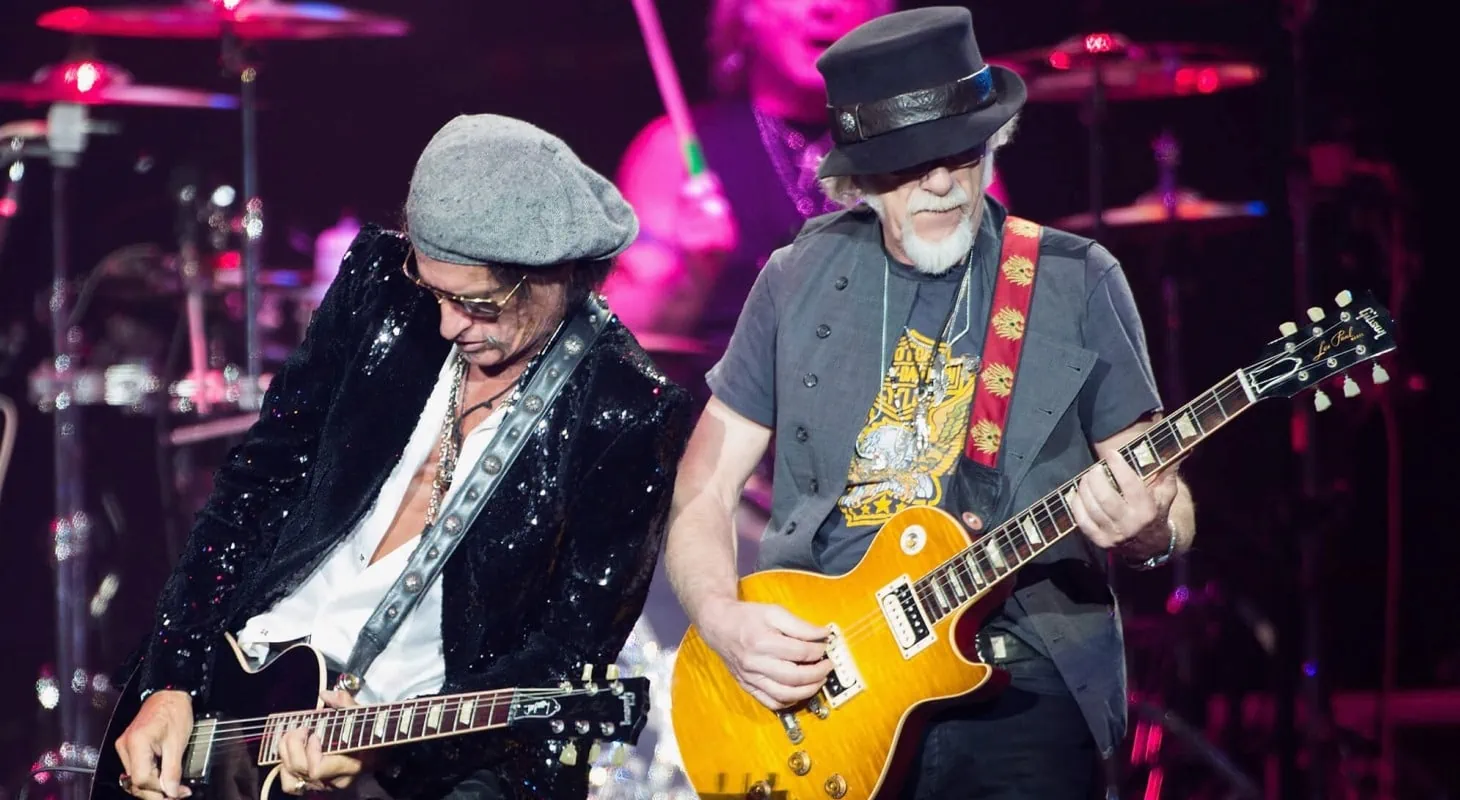Aerosmith was formed in 1970 and has managed to remain relevant for the majority of their career. They forged that reputation in steel with amazing songs, epic choruses, and, of course, a great guitar tone.
Perhaps you, like me, and many others, have tried replicating the intricacies of Joe Perry and Brad Whitford’s tone to play your favorite Aerosmith tunes. Well, in this article, you’ll find a map to the treasure with a description of the band’s most iconic instruments and how to set your amp to get their tone.
Let’s walk this way!
Table of Contents
Aerosmith’s Most Iconic Guitars
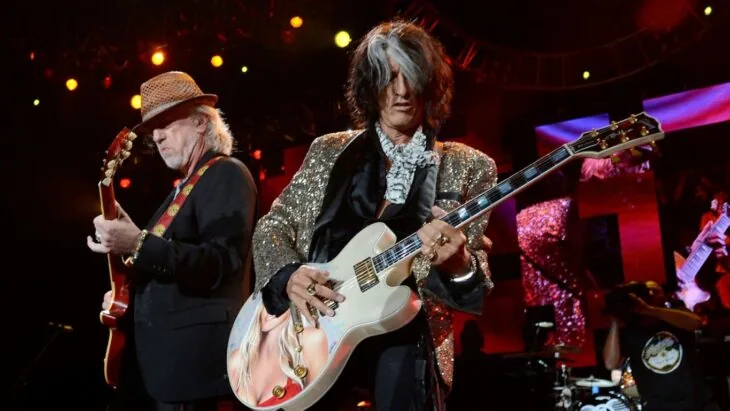
Listing all the guitars Aerosmith guitar players have used in their 50+-year career is mission impossible. So, I’m taking you through some of the most iconic and relevant ones.
Joe Perry
Joe Perry is widely regarded as a Les Paul guy. I mean, at least, a dual-humbucker kind of player. That said, lately he has been incorporating some single-coil pickups and also some P-90s to his rig.
- Gibson Les Paul – Joe Perry had his signature Les Paul in the ‘90s (you remember those MTV videos starring Alicia Silverstone, right?) but that model has since been discontinued. He’s also well-known for owning a holy grail ’59 Les Paul (sold and then given back to him as a birthday gift from Slash). He plays a replica of that guitar by the Murphy Lab live. Finally, he also plays his new signature guitar, the Les Paul Axcess. It’s a weird piece with one humbucker in the bridge position and a Strat-style Wilkinson tremolo.
- Dan Armstrong Plexi Guitar – Another iconic guitar associated with Perry is the Dan Armstrong see-through plexi guitar. Although he still has his originals, he keeps them in the studio and plays new replicas live.
- Gibson Lucille – Joe Perry played Gibson Lucille guitars (BB King signature) for years but has replaced them with an ES-355 with his wife’s (Billie Paulette Montgomery) painted on. These guitars have simplified single-tone and volume controls.
- Danelectro 12-string – Live, Joe Perry rocks a 59 Danelectro 12-string guitar tuned to drop D, featuring a P-90, and a dual-lipstick pickup.
- Stratocasters – Although they’re custom-made guitars, especially for Joe with reversed Stratocaster bodies hand-carved to reach the upper frets, I can say Joe Perry plays Stratocasters live. His are by Bruce Nelson, and feature either Fralin, Joe Barden, or Lollar pickups.
To play with Joe’s tone, you’ll have to be rocking a Gibson VOS R9, but if that’s too bulky of a price tag, you can go for an Epiphone Les Paul 59.
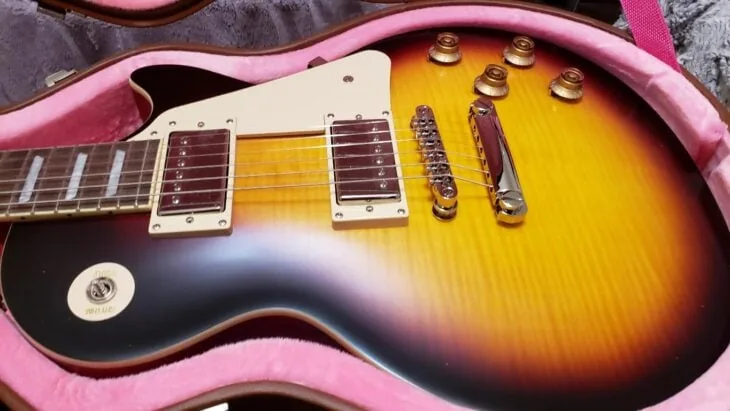
Combining that with a noiseless Fender Ultra Luxe Stratocaster can help you achieve a variety of Aerosmith-approved tones. Again, for a more limited budget, you can get a Squier Classic Vibe ’60s Stratocaster.
Brad Whitford
On the other side of the stage, Aerosmith’s rhythmic spine is held together by Brad Whitford. A tone master himself, Brad has amassed quite an amazing guitar collection throughout his career. Let’s cover the most iconic guitars he’s associated with.
- Gibson Les Paul – Although Joe Perry is his bandmate and he’s playing Les Pauls most of the time, Brad Whitford plays several Les Pauls live and in the studio. He plays predominantly three of them, a couple of bursts equipped with Ron Ellis PAF pickups and WCR Darkburst pickups (wound to Duane Allman’s specs). The third Les Paul is a replica of the ’58 Cherry Les Paul named Lucy and owned by Clapton/Harrison with a Bigsby and Darkburst pickups.
- PRS Guitars – Since its release, the PRS Silver Sky has been collecting fans in every corner of the planet. Brad plays one of those and also a 594 that he bought directly at NAMM 2020.
- Fender Stratocasters – Live, Brad Whitford plays a quartet of Fender Stratocasters. To begin with, he plays a Clapton model in 7up Green. Secondly, he rocks a 1985 seafoam green ’62 Reissue (with DiMarzio Area 58 and HB2 pickups). Thirdly, a Custom Shop specially built for him with a pine body and a no-truss rod maple neck. Finally, he plays a Custom Shop heavy relic Stratocaster.
Brad has said in interviews that he can play an entire Aerosmith show on a single guitar, the PRS Silver Sky. You can also get away with a Silver Sky SE for a little less. Other than that, the mentioned assortment of Les Pauls above can do the job too.
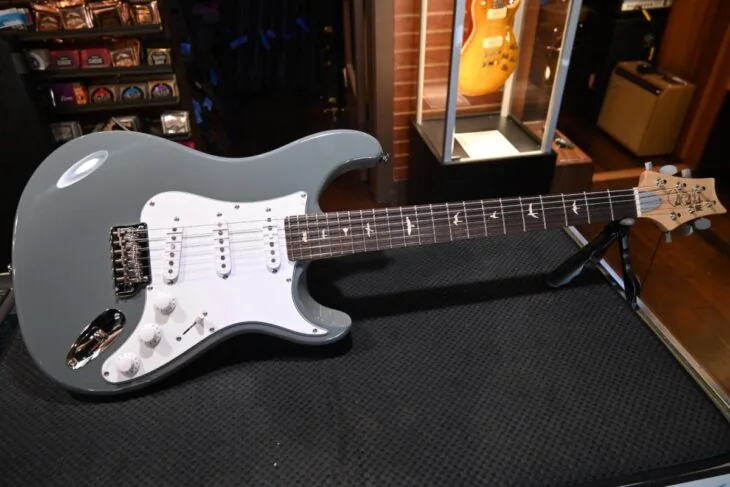
Some of Aerosmith’s Most Relevant Pedals
Pedal-wise, the setup Joe and Brad use live isn’t that complicated, but they do hide a couple of aces up their sleeves. Let’s see what you need to recreate their tone at home.
Joe Perry
Bob Bradshaw, one of the most prominent rig builders in the world, made Joe’s rig from scratch. These are some of the effects included.
- Wah Pedal – Next to the controller, the Wah pedal that Joe employs live is a Real McCoy Custom Wah. You can get close with the new Vox The Real McCoy VRM-1
- Whammy Pedal – The Digitech Whammy V is Joe’s pedal of choice to play those crazy guitar parts.
- Volume Pedal – To find the guitar-to-amp sweet spot, Joe Perry plays through an Ernie Ball volume pedal.
- Plasma Pedal – The Game Changer Audio Plasma pedal sounds like no other guitar pedal in the world. Perry uses one live to get crazy.
- POG – The Electro Harmonix POG 2 revolutionized the world of guitar upon release. Joe plays the original one with the sliders. You can replace it with the more affordable Micro POG as well.
- Tremolo – The tremolo pedal chosen by Joe Perry is a Diamond Pedals TRM1. You can replace it with a MXR Tremolo.
- UniVibe – The DryBell UniVibe is widely regarded as the next best thing after the original. You can get quite close with an MXR Univibe pedal as well.
- Compressor – Joe Perry plays a Unit 67 compressor also by DryBell, which is, in essence, a high-end studio-grade 1176 Compressor in a stompbox format. You can replicate that sound with a UAFX 1176
- Delay/Echo – For delay and echo, Joe plays through a Dunlop Echoplex Delay, the almighty Strymon Volante, and a Wampler Faux Tape Echo. You can get away with most of Joe’s live sounds with a Carbon Copy Deluxe.
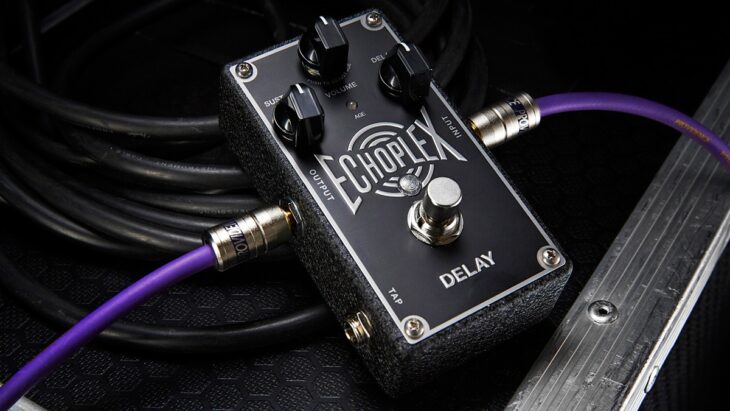
- EQ – To replicate the mids of the Ampeg-V amplifier used for “Walk This Way”, Joe needs an EQ to fine-tune the sound. For that, he uses an MXR Ten Band EQ.
- Overdrive – Although most of Joe’s tone comes from his amps, he employs a Rockett Audio Designs Archer to make it dirtier.
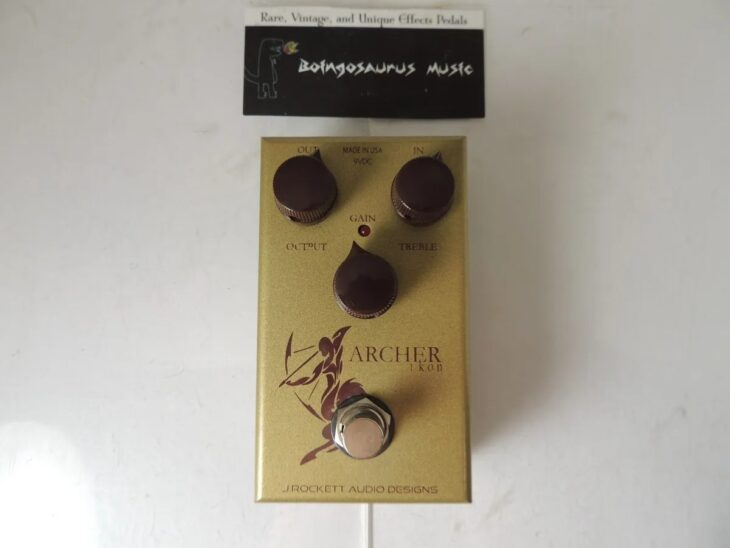
Brad Whitford
Brad Whitford’s amplifier tower is much more reduced when compared to Perry’s, but his pedals make up for that. Let’s go through the basics.
- Compressor – Just like Joe, Brad leaves his DryBell Unit 67 on all the time.
- Reverb – Brad’s main reverb unit is Strymon’s FLINT You could also use a TC Electronic Hall of Fame.
- Echo – Echo and delay duties are handled by a couple of Strymon pedals, a DECO, and an El Capistan. You could replace them with something more affordable like a Carbon Copy or an Echoplex.
- Overdrive – Overdrive duties are handled by an original silver KLON Centaur. You could replace it with one of the zillion iterations of that pedal available, like the silver version of the Archer.
- Boost – For boosting his original signal, Brad plays through a Vick Audio 73 Ram’s Head and a KingTone The Duellist. These are hard-to-find, expensive pedals. You could replace them, not exactly, but with a TS-9 Tube Screamer with a very low gain setting.
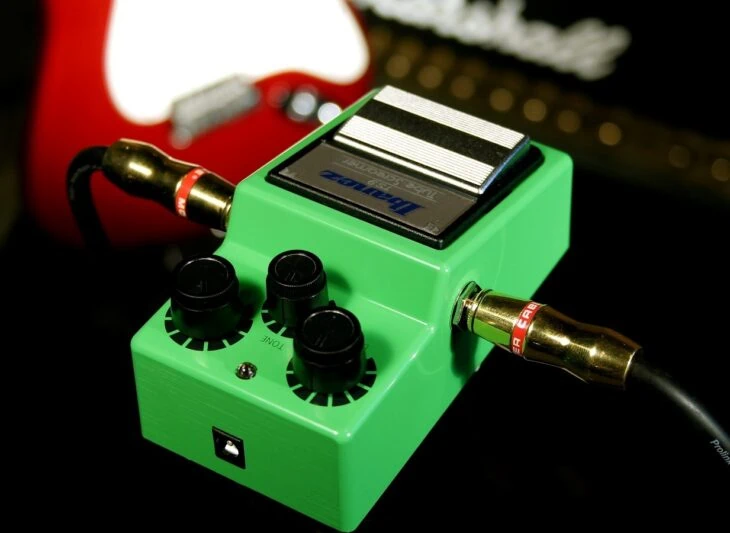
- Chorus – For spatial effects, Brad uses the Boss Waza Craft Dimension C You can get close with a Boss CH-1 Super Chorus.
- Ambiance effects – All ambiance effects in Brad’s tone are handled by a single unit: an Eventide H9. That’s such a complex pedal that you can never replace it exactly. Nevertheless, the ambiance side of Brad’s playing might not be something you can’t live without.
Aerosmith’s Most Iconic Amps
Aerosmith’s guitarists have very different approaches when it comes to amps. While Joe Perry rocks a tower of different amps, Brad only takes two heads on the road. Let me show you some of them.
Joe Perry
Originally, Joe Perry rocked the good-old Gibson Les Paul into Marshall stack formula for decades. Nowadays, though, he has switched to Friedman Dirty Shirley heads.
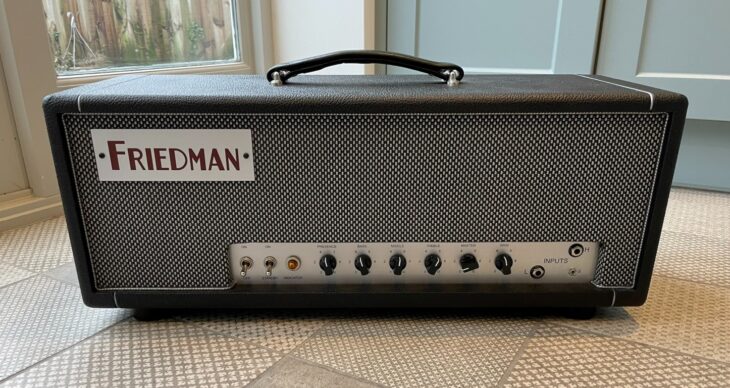
He rocks three of them with two Marshall TV bottom cabinets with classic ones on top (oddly placed bottoms-up). You could replace them with either a Friedman BE-Mini or by adding a Friedman Dirty Shirley Overdrive Pedal to your board.
Perry’s rig mixes the Friedmans with some Supro combos like the Supro 1690T Coronado, the Supro S6420+ Thunderbolt Plus, and the Supro 1696RT Black Magick Reverb. These are 2×10, 1×15, and 1×12 configurations respectively.
To mimic that tone a Fender ’68 Custom Princeton Reverb could be a great choice.
Brad Whitford
Brad’s tech is Greg Howard who, along with Ossie Ahsen and Brad founded 3 Monkeys Amplifiers. Knowing that it comes as no surprise that one of the two heads Brad uses live is one made by his company.
He plays the Orangutan Pro head but instead of being fitted with a quartet of 6V6 valves like they usually are, it features a couple of 5881s for a bigger valve tone.
The second amp is a completely stock Magnatone M-80 Super Fifty-Nine.
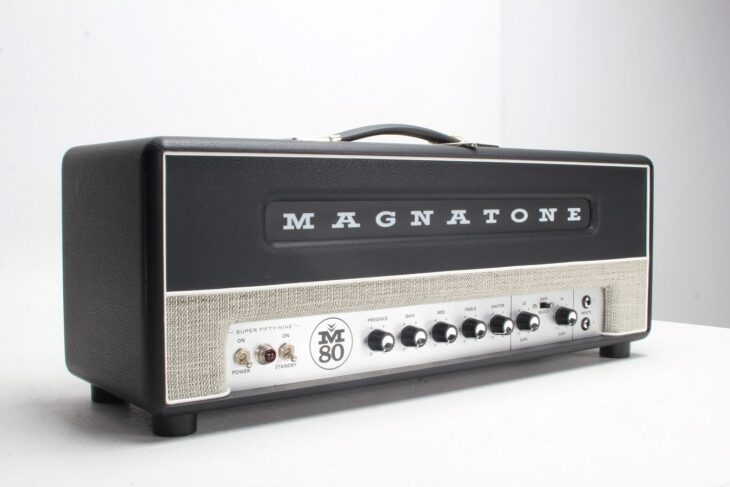
Both amps feed Marshall 4×12 cabinets loaded with Celestion Greenback speakers. On top of those, a couple of 2×12 3 Monkeys cabinets show off their red tolex.
Although these are hard-to-get, expensive amps, you could get closer to that tone with something like Marshall ORI50H or an ORI20H.
Some Cool Settings
This far, I divided it all so you could get an insight into what Brad and Joe play. Nevertheless, the settings will be united into one so you can play either part seamlessly.
Walk This Way Amp Settings
You have to use the MXR Equalizer to boost the 3,000 KHz for that Ampeg V tone. Oh, and no, the hand-over-the-controls thing was just for the video!
- Volume – 6
- Gain – 6
- Treble – 7
- Mids – 4
- Bass – 6
- Presence – 5
Dream On Amp Settings
The variation in tone comes from the distorted sound rather than changing the EQ. Therefore, consider moving the gain knob from 2 to 7 going from clean to dirty.
- Volume – 4
- Gain – 2/7
- Treble – 6
- Mids – 6
- Bass – 7
- Presence – 6
Sweet Emotion Amp Settings
Going from clean to distorted, move the gain from 1 to 5.
- Volume – 4
- Gain – 1/5
- Treble – 5
- Mids – 6
- Bass – 7
- Presence – 5
Crazy Amp Settings
Going from rhythm to lead, you have to move from 5 to 9 in the gain setting. You can also step on a booster or distortion pedal.
- Volume – 6
- Gain – 5/9
- Treble – 6
- Mids – 7
- Bass – 7
- Presence – 5
Rag Doll Amp Settings
- Volume – 6
- Gain – 5
- Treble – 7
- Mids – 6
- Bass – 7
- Presence – 5
The Bottom End
Aerosmith’s career boasts a proud 50+ years of hit records built over the soaring lead sounds of Joe Perry and the right-hand precision of Brad Whitford. These are some of the tools they used to edify this cathedral of rock and roll.
Set your amp to the right sound, loosen your hair, and rock on!
Happy (Rock and Roll) playing!

